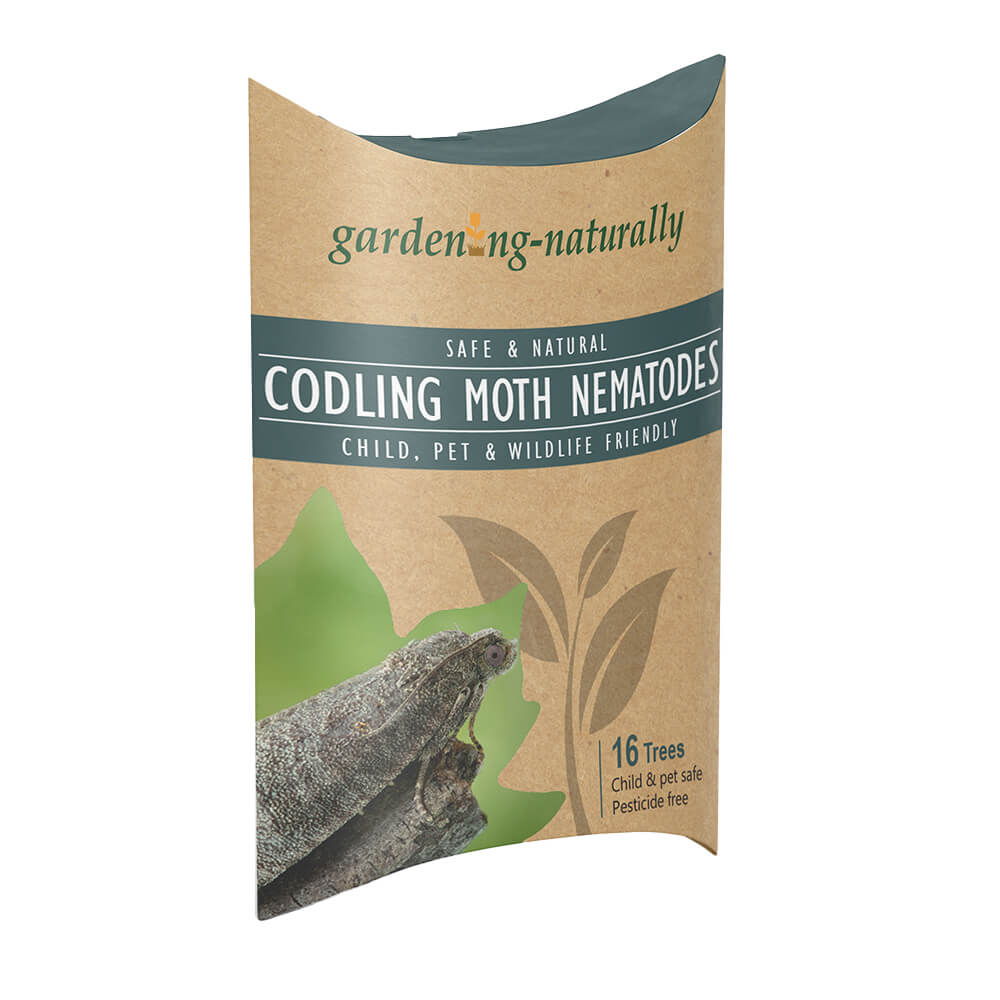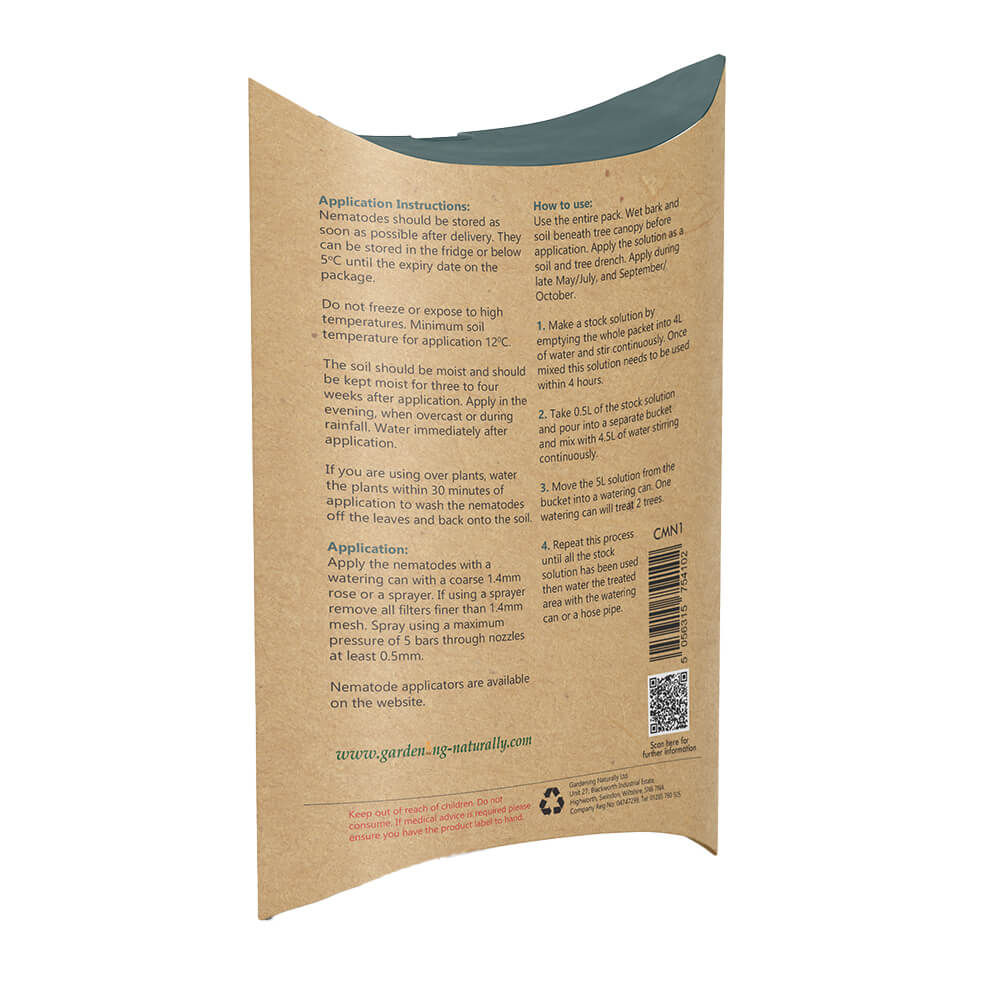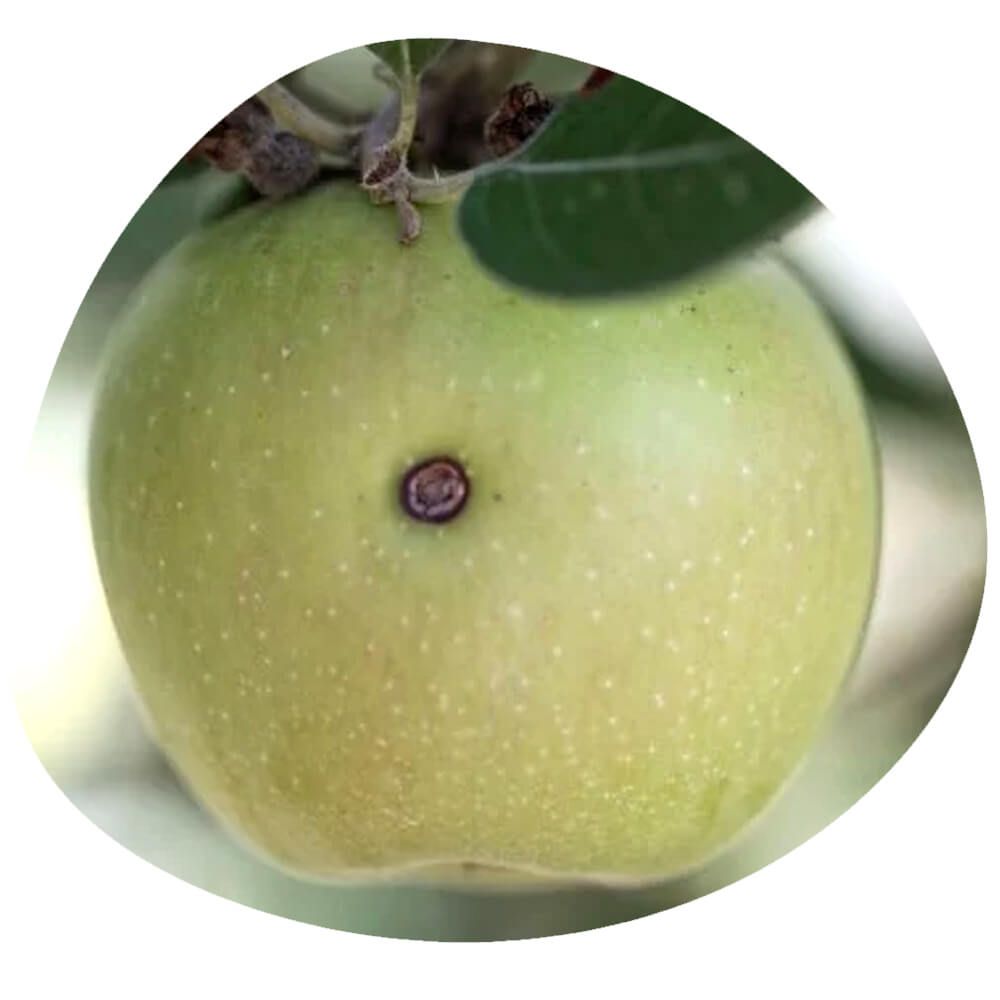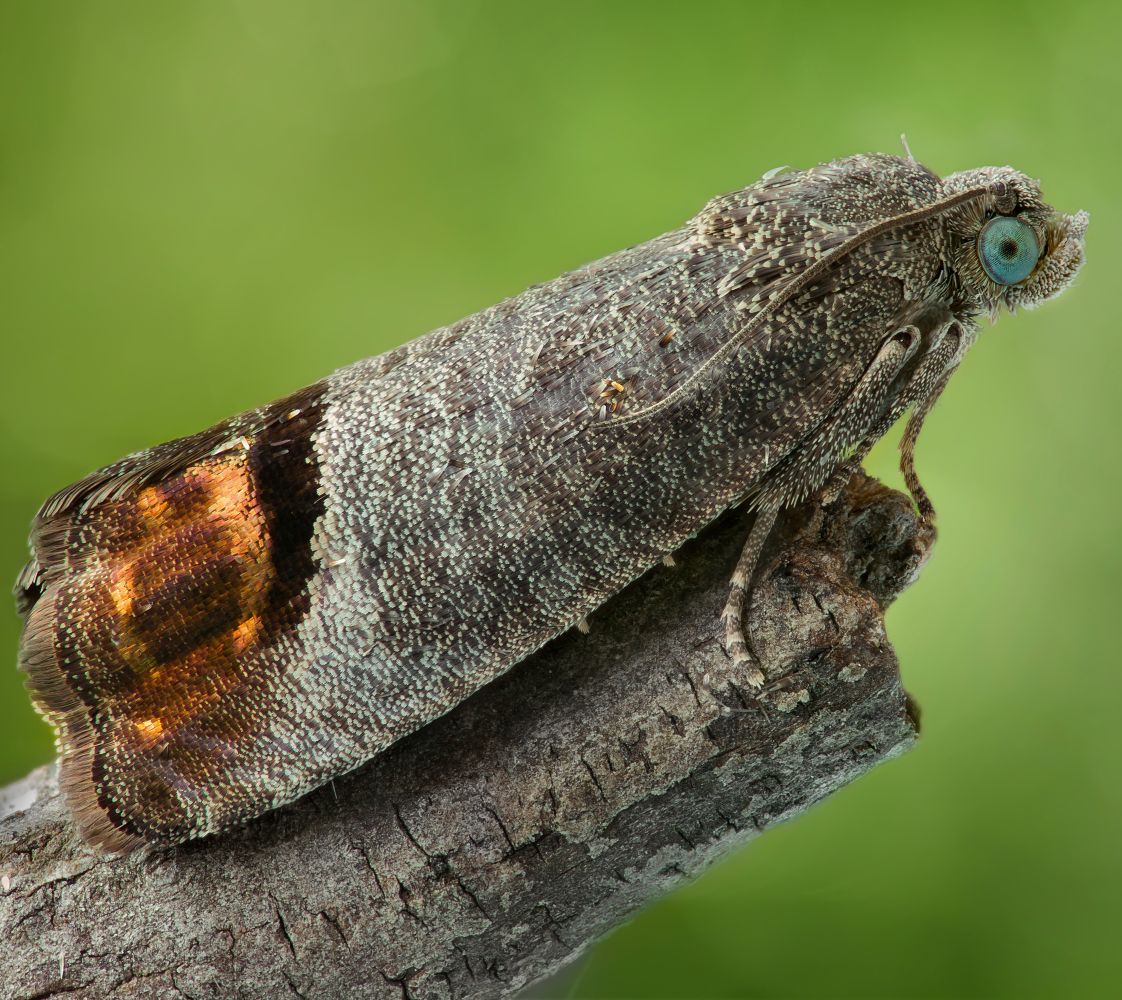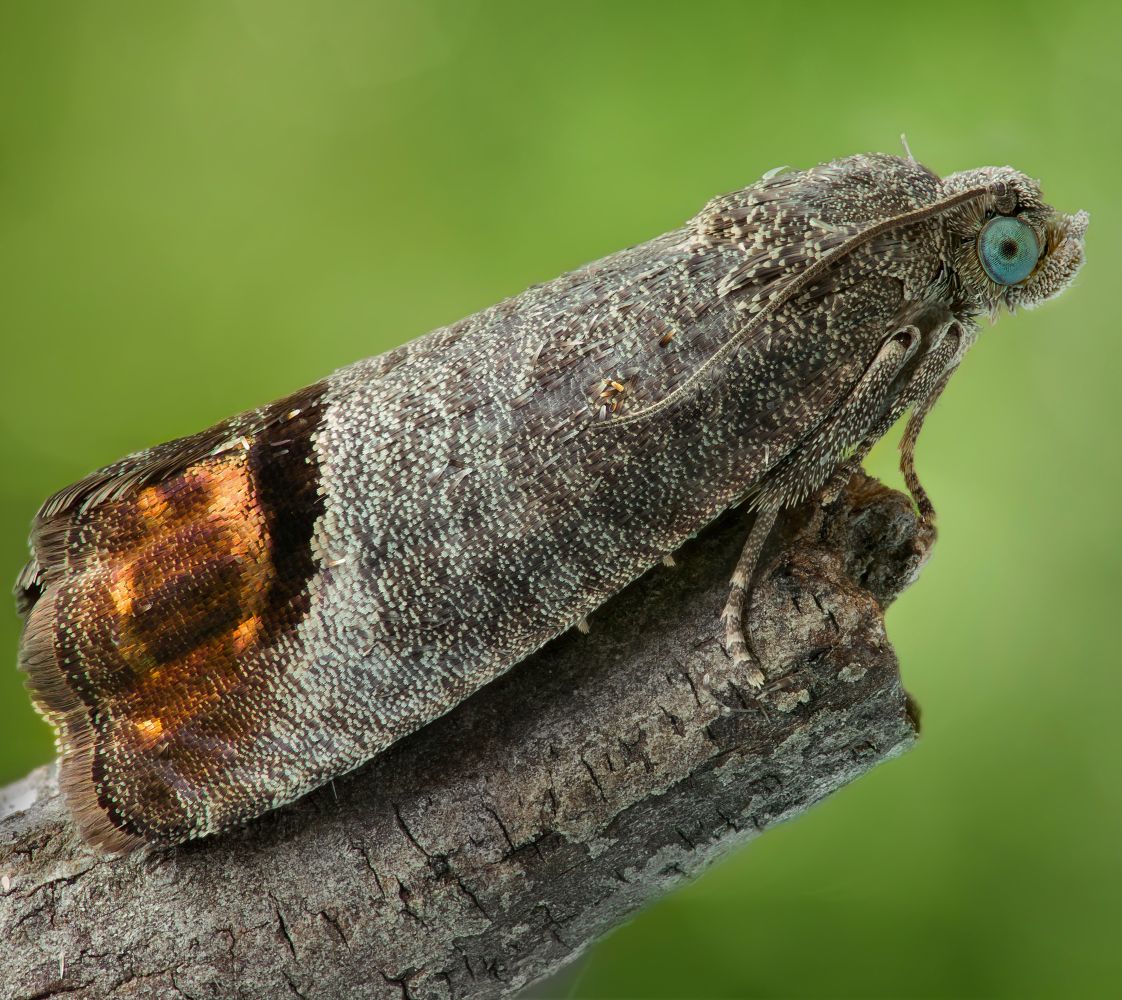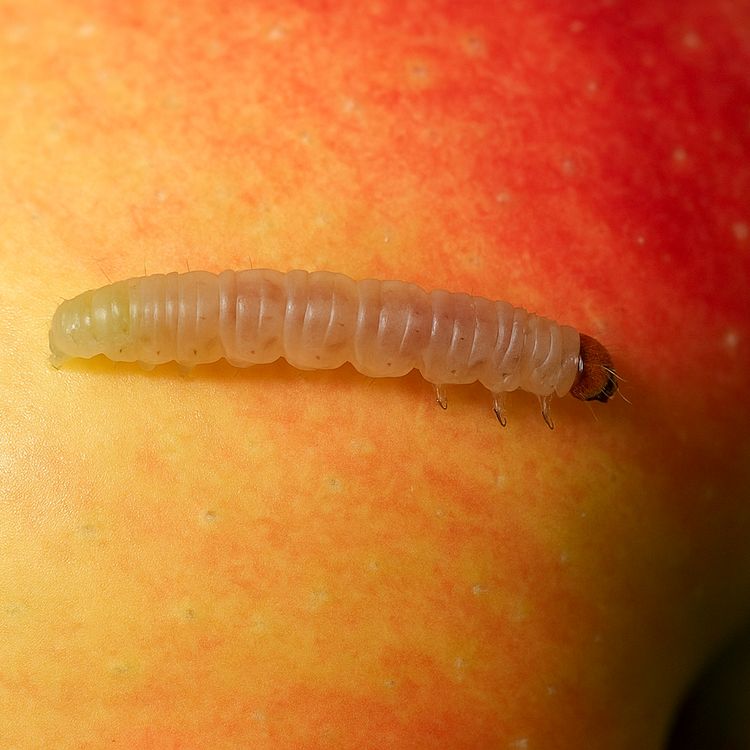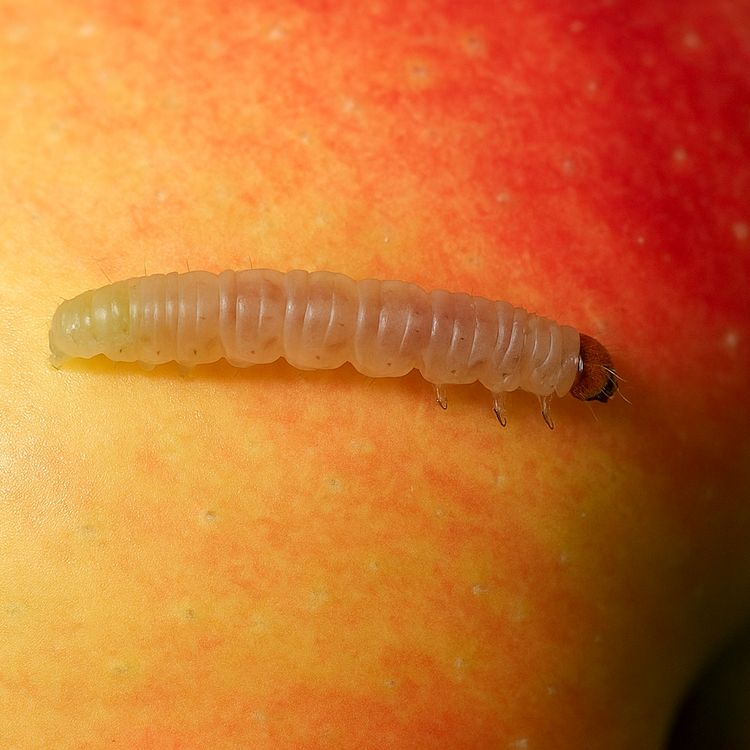Codling Moth Nematodes Treats 16 Trees
Codling Moth Nematodes Treats 16 Trees is backordered and will ship as soon as it is back in stock.
Codling moth nematodes are a natural pest control treatment for apples, pears and other fruit trees. This product treats approximately 16 trees and targets codling moth larvae during vulnerable stages.
Fruit Tree Pest Management for Codling Moth Larvae
Codling moths can cause significant damage to apples, pears and other fruit trees. Their larvae burrow into the fruit, making it unfit for harvest.
This product treats approx 16 trees and uses a mix of Steinernema nematodes to help reduce codling moth numbers by targeting their larvae during vulnerable stages.
Best Times to Use Codling Moth Nematodes in the UK
Apply the treatment in April – late June, and again September/October, when overwintered larvae begin hatching, and again in Autumn to control new generations before they pupate. These seasonal timings help stop pests before they damage developing fruit.
Use Alongside Codling Moth Traps
To increase your chances of success, pair this product with codling moth traps during summer. These traps help reduce adult moth numbers and provide early warning for infestations. Fewer adults mean fewer eggs laid at the end of the season.
Visible Signs of Codling Moth Infestation
Look for holes in fruit, brown trails under the skin, or apples that fall early. Codling moth larvae are white with a brown head and usually remain hidden inside the fruit. Using this treatment helps reduce further fruit loss during the growing season.
Safe for Family Gardens, Edibles and Wildlife
This biological control method is safe to use around pets, children and garden wildlife. It poses no risk to pollinators and has no impact on harvest time. Simply apply with a watering can or applicator—no special equipment required.
For more tips on protecting your apple trees, see our apple tree protection guide.
Frequently Asked Questions for Codling Moth Nematodes
What is the best treatment for codling moth larvae in apple and pear trees?
This product uses a natural mix of Steinernema nematodes to target codling moth larvae, preventing them from damaging apples, pears, and other fruit trees.
How do nematodes help control codling moth infestations?
Nematodes are microscopic worms that naturally hunt and kill codling moth larvae in the soil or bark, breaking the pest's life cycle before it damages fruit.
When should I apply codling moth nematodes in the UK?
Apply twice per year for best results:
- Spring to early summer (April–late June)
- Autumn (September–October) — these periods target the most vulnerable stages of the codling moth life cycle.
How many fruit trees can this pest control treatment cover?
One pack treats approximately 16 fruit trees, making it suitable for home orchards and larger gardens.
Can I use this biological pest control with codling moth traps?
Yes, pairing nematodes with codling moth pheromone traps during summer increases effectiveness by reducing adult moth numbers and alerting you to early infestations.
What are the signs of codling moth damage in apples and pears?
Common signs include:
- Small holes in the fruit
- Brown tunnels under the skin
- Prematurely dropped apples
- White larvae with brown heads found inside the fruit
Is this codling moth treatment safe for organic gardens and wildlife?
Yes! This natural method is:
- Non-toxic to pets and children
- Safe for pollinators and beneficial insects
- Approved for use around edible crops and wildlife-friendly gardens
How do I apply codling moth nematodes to my fruit trees?
Simply mix with water and apply using a standard watering can, nematode applicator or garden sprayer—no specialist equipment needed.
Will using nematodes affect my fruit harvest?
No, this treatment is harvest-safe and has no effect on the taste, size, or timing of your fruit yield.
Reviews
Reviews
How To Use
How To Use
Use the entire pack. Wet bark and soil beneath the tree canopy before application. Apply the solution as a soil and tree drench. Apply during late May/July and September/ October. 1. Make a stock solution by emptying the whole packet into 4L of water and stir continuously. Once mixed this solution needs to be used within 4 hours. 2. Take 0.5L of the stock solution and pour into a separate bucket and mix with 4.5L of water stirring continuously. 3. Move the 5L solution from the bucket into a watering can. One watering can will treat 2 trees. 4. Repeat this process until all the stock solution has been used then water the treated area with the watering can or a hose pipe.
